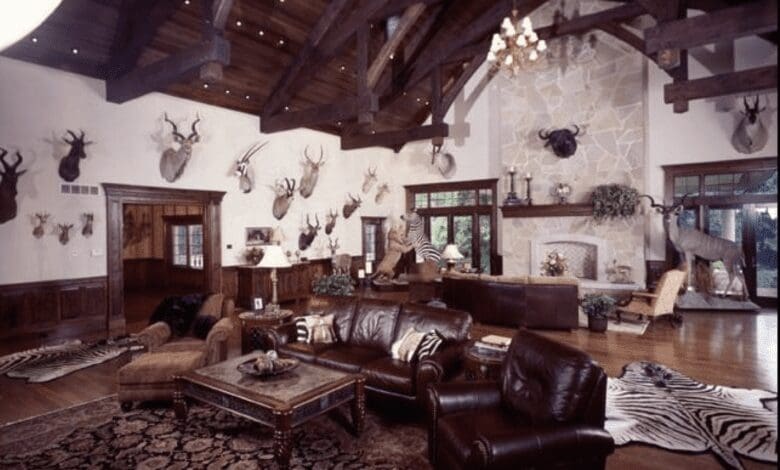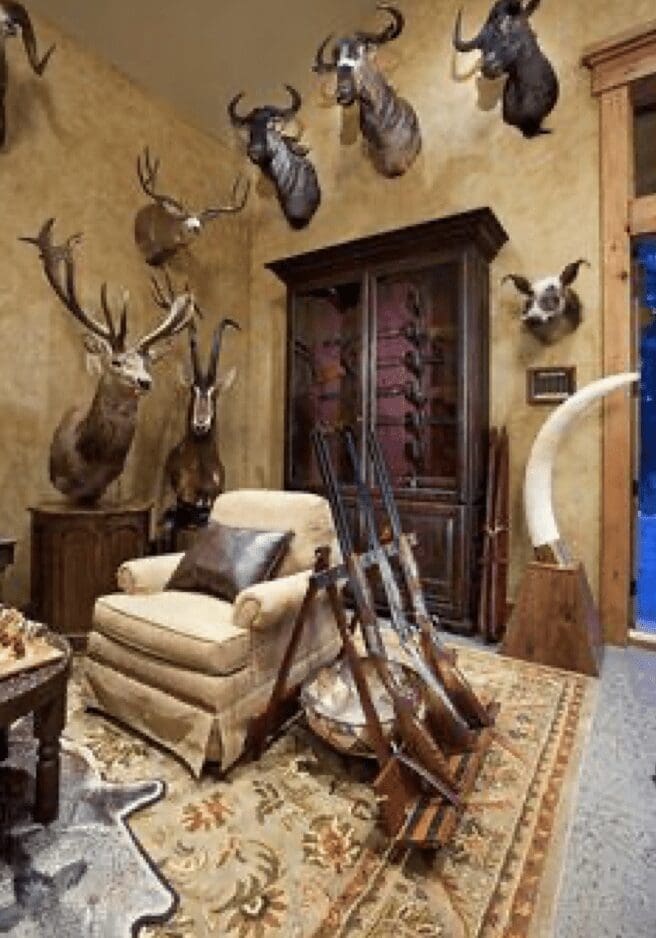How to Design Your Trophy Room

The room of memories is known to designers as either a trophy room or a game room. The space displays the best artifacts and keepsakes you’ve gathered throughout time from your travels and outdoor activities. Hunters can take their time enjoying the beauty of nature’s masterpieces while reflecting on the experience in their trophy room.
Hunting enthusiasts frequently discuss how to design their trophy rooms. Asides the benefits of your trophy room, the following will go through some of the architectural design features to take into account. There are countless possibilities. Keep in mind that a trophy room should show the owner’s passion and style while still being welcoming and cozy.
Make a Plan: The homeowner must first decide what the room’s actual purpose is. Will it be used as a repository for animal heads only? Will it be an adaptable family room? A framework such as a poster design for you from vista has to be put together once the main concept has been decided. The architect serves as the group’s cornerstone and provides a blueprint for the designer, builder, lighting consultant, and taxidermist(s). The trophy room consultant is the boss of all the experts involved. Think about the architectural elements you want to include or add to the space. What is the extent and scope of the collection of animals in art? You have to plan for all these.
Avoid the use of natural light: Almost always avoid using natural lighting. Mounts will be harmed by ultraviolet light, you will lose precious space due to the windows, and accent lights will be less effective due to the incoming light. The ideal strategy is to completely avoid windows, with the one exception of those that have a lovely view. Window film can be used to prevent most UV radiation.
Make use of double doors: Include double doors throughout your home, not just in the trophy room. There are stories of other hunters who had trouble getting their treasures through the entryway of their trophy rooms. Others did construct double-doored chambers, but their exterior doors were of conventional size. Additionally, double doors have another use. Making good use of that space could make the difference between people being impressed or disappointed by your collection.
Make use of the right materials: Use a 34-inch plywood substrate inside the space to provide for several wall-hanger attachment points. Avoid wood, and stick to a color scheme of neutrals. Wood, carpet, and even concrete are just a few of the materials that can be used to cover the floor. For added impact, don’t forget about area rugs and skins. Take into account the locations of your electrical outlets and wiring. As plumbing will be required, decide in advance if you’ll include a bathroom or wet bar in the trophy area.
Keep the room moist: Maintain a room temperature of 65 to 72 degrees. A trophy room needs moisture as well, so set your humidity level to a consistent 40 to 50 percent and let it alone year-round. If at all possible, incorporate a tiny waterfall, pond, or other living props with your trophies. These will increase the amount of moisture in the air. Make good use of your supply and return air grates.
Make use of optimal lighting: The most crucial technological element in the space is lighting. A trophy room’s lighting system consists of three components namely; perimeter lighting, accent lighting, and general lighting.
Incorporate Things You Love: Include the things you love. Include a library, a fireplace, and/or an entertainment area. If you plan to keep your firearms in the trophy room, think about adding a concealed gun room or a gun safe hidden behind a cabinet. Make sure to include any artwork, honors, or collectibles you want to highlight. Lastly, the creatures themselves. Include your taxidermist in the design process whenever possible. Make dioramas or other models with a concept of where you want each animal to be placed. The only restriction is the available space, as adequate mounting distance is essential.
Functionality:A trophy room should still be functional and useful for guests, family, and/or clients as a part of your house. This comprises couches, tables, chairs, desks, a TV, a poker table, and other amusing and functional items. Trophy rooms don’t always have to have a museum-like vibe.
Room Size: Different impressions might be created depending on the size of the space you are using. For instance, a smaller room seems cozy while a larger space looks impressive. Your personal style, personality, and collection size are a few things to think about. Space is a nice detail, but you don’t want to fill the space to the point that it seems cluttered. To ensure the finest viewing of your taxidermy features, a wall height of 12 to 14 feet is advised.

